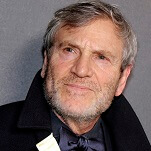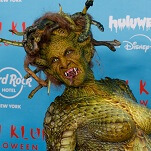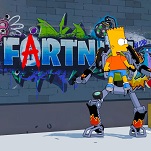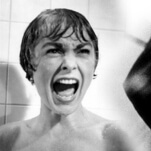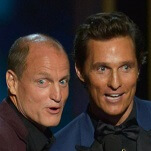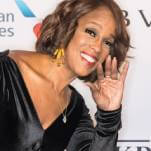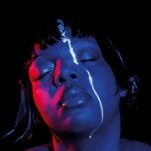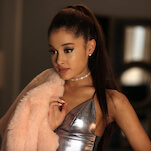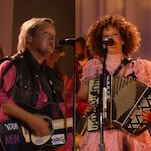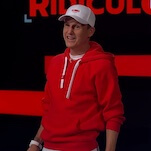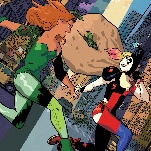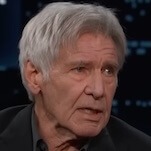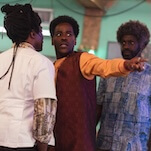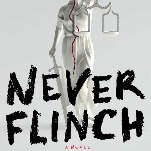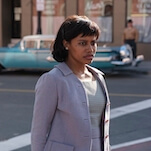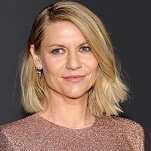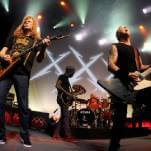I was a magazine fiend in the '90s–a particularly good era to be hooked on periodicals. At various times during the decade I subscribed to Spy, New York, The New Yorker, Harper's and The Comics Journal, and I also bought the occasional issue of Spin, Rolling Stone, Magnet, Movieline and Film Comment. And the two constants throughout the decade: Premiere and Entertainment Weekly, which together covered the business side of show business exhaustively, at a time when producers, agents and studio heads were as well-known as directors and stars.
The print edition of Premiere folded earlier this year without warning, but because I hadn't picked up an issue since maybe 2005, I greeted the news with a shrug. (So long as Glenn Kenny's keeping his blog going and writing reviews on-line, I'm getting all I need from Premiere.) But I do still subscribe to Entertainment Weekly, and read it both in print and on-line. I know a lot of people roll their eyes at EW, but it's always delivered more or less what it promises: breezy coverage of what's going in showbiz, coupled with pithy commentary by a stable of writers with clean styles and clear points of view. I could quibble–and frequently do, while I'm reading–with an editorial sensibility that seems to favor fleeting novelty and the illusion of subversion in movies, music and books over more eternal and/or avant-garde qualities, but by and large the EW staff is smart and enthusiastic, and seems happy in their work. Even if I don't always agree with them, I appreciate their approach.
Lately though, I've noticed some changes to the magazine that seem like more than just the usual yearly cosmetic upgrades. And I'm wondering how much of these changes are related to the sudden demise of its old rival. Entertainment Weekly outgrew its preoccupation with "power" a while back, and the editors have apparently decided that turning GOAT lists into cover stories has become as passé as cobbling together pop minutiae into the issue-swallowing "quizzes" the magazine was doing for a while. But they also appear to be cutting back on the lengthy "stories from the set" reportage that used to be a cover story staple; perhaps because it's harder now to predict months in advance which movies will be a sensation in mid-September, or perhaps because the reading public is getting less interested in the mechanics of movie-making.
What are we interested in? Judging by the last three months of EW covers, it's all stars, scandal, and TV. Here are the fifteen cover stories since the beginning of August: The end of the Harry Potter book series; The Bourne Identity (one of those increasingly rare behind-the-scenes pieces); Superbad (ditto); the Fall Movie Preview (featuring Reese Witherspoon, but not much about the movie she's promoting); "The Summer Of Scandal!" (more on this in a moment); Jodie Foster (more of a straight interview than a behind-the-scenes on The Brave One); the Fall TV Preview (featuring Kate Walsh of Private Practice); Britney Spears' MTV awards show fiasco (more on this in a moment too); Heroes; The Office; the possibility of a Hobbit movie (more on this etc.); The Photo Issue (featuring Grey's Anatomy star Patrick Dempsey); Carrie Underwood; American Gangster (again, more an interview with the stars than a look at the movie); and the Holiday Movie Preview (featuring Johnny Depp and an old-fashioned behind-the-scenes on Sweeney Todd…the first real movie BTS cover since Superbad).
Granted, the magazine has always balanced movie, music and TV coverage, and it's not like the go-to-the-set/interview-the-stars-and-director/analyze-the-prospects type of EW movie article has disappeared completely. But lately, when covering film in particular, EW is leaning heavier on interviews than conventional entertainment reportage, almost as though the editors are conceding in advance that their target audience will be more interested in Jodie Foster herself than in any movie she might've made. (Judging by the low box office for The Brave One, they may be right; or is it the other way around, that the entertainment press's lack of interest in the movies the stars are promoting ends up dampening the buzz?)
I'm also trying to suss out the trend in those three cover stories I flagged above. I don't have a major problem with "The Summer Of Scandal!" in and of itself, because that was a well-reported piece on a significant entertainment phenomenon, which added historical context and analysis. But following that piece up so quickly with the Spears cover and the Hobbit cover was an odd move. Both of those stories–instant reactions to Spears' public meltdown and a possible-but-unconfirmed breakthrough in the Peter Jackson/New Line stalemate–are more "News + Notes" fodder, not cover material. In the past, Entertainment Weekly has used its cover slot to spotlight performers its writers really like (or at least to reframe the ones that everyone else's talking about). The Spears and Hobbit covers seemed kind of trailing-edge. Space-fillers for a slow week. Or maybe just an attempt to cash in on the enduring manias for The Lord Of The Rings and out-of-control-diva-bashing.
The inside of the magazine has taken a few turns as well. As recently as last year, EW was running surprisingly exhaustive celebrity profiles, like the great day-in-the-life they did on Wayne Newton–a piece that could stand up with the best of the '60s/'70s "new journalism." Over the past couple of months though they've run extended pieces about one writer's memories of '80s teen sex comedies, and another's love-hate relationship with horror. Both of these articles were interesting and well-written, but they were essentially blog entries, just as the magazine's actual "News + Notes" section (as opposed to the N+Ns that get passed off as cover stories) has become a repository for quick-hit analysis and cribbed-from-the-trades info-bites, much of it already available on the EW website.
And about that website: While Entertainment Weekly has done better than a lot of print media outlets at taking its web presence seriously, they're obviously still struggling with how to make the content they post on-line distinctive. So one day I click the link for Ken Tucker's "Five Reasons To Live"–a column I used to look forward to–and find that instead of getting to read Tucker's words, I have to watch a video of him reading them. So now I don't click on that column anymore. Nor do I click on any of EW on-line list features, which inevitably lead to a slow-loading slideshow rather a readable page or two.
Maybe people just don't want to know those in-depth behind-the-scenes pieces so much these days. Maybe they don't want to know how the sausages are made anymore. I recently wrapped up an assignment for another publication, working on one of those who's-who-in-Hollywood type of pieces that Premiere and Entertainment Weekly used to trot out yearly, and I could sense fatigue both from the people I was interviewing and the people who gave me the gig. Movies may be extraordinary, but the business of making them largely isn't, except to those who grew up wanting to be a part of that world in some way. It's fine that EW has evolved past those stories, because what makes a magazine worth renewing year after year is the fun of seeing how it grows and changes with the times.
But I hope there's not some corporate fretter eyeing the ignominious end of Premiere and thinking that the Entertainment Weekly print experience needs to become more like the on-line experience in order to retain readership. Because the entertainment world and those who follow it are still best-served by old-fashioned observe-and-quote magazine journalism, even when it takes a light tone. There's still a place for what EW does–or at least what it used to do.


